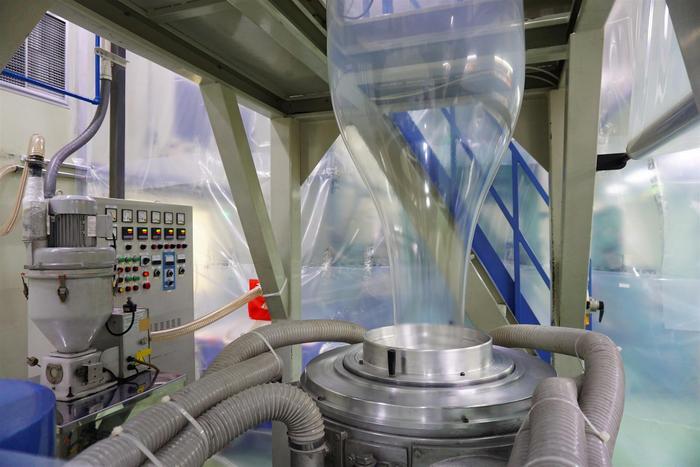The rapidly growing number of electronics production facilities in China has increased the demand for high-quality ESD packaging. Manufacturers are always on the lookout for packaging that will protect their products while they are being transported to their end users. As a result, the Chinese anti-static polyethylene (PE) packaging industry has become a pioneer in developing the most advanced technology for film production using single wall carbon nanotubes. These are also known as graphene nanotubes because each nanotube is an extremely thin rolled-up sheet of graphene.

A Suzhou packaging manufacturer is kicking-off commercial production of a line of anti-static PE films with graphene nanotubes using a blown-film extrusion process. As little as 0.008% of TUBALL nanotubes introduced via OCSiAl’s TUBALL MATRIX 810 concentrate achieves a surface resistivity of 10^9 Ω/sq. Several other Chinese companies have also successfully completed industrial tests of nanotube applications, and are about to launch their product lines of PE films containing TUBALL nanotubes.
The standard organic anti-static additives used in PE packaging usually lead to an oily surface feeling and to conductivity that is only temporary. Unlike these conventional additives, graphene nanotubes allow PE manufacturers to achieve permanent and uniform conductivity while also preserving light transmittance of above 90%. Increased stress at break in the perpendicular direction by around 60% results in improved durability of the PE film. Moreover, the application of graphene nanotubes enables a standard clean manufacturing process without the powder or dust associated with using carbon black. All these benefits make PE film with nanotubes ideal for electronics packaging and they are thus highly attractive to manufacturers.
Such prompt entry into the market has been facilitated by the new technology developed by OCSiAl – a nanotube-based concentrate specially created for anti-static PE packaging applications. This technology is now readily available to the industry thanks to the company’s expanding distributor network in China.
